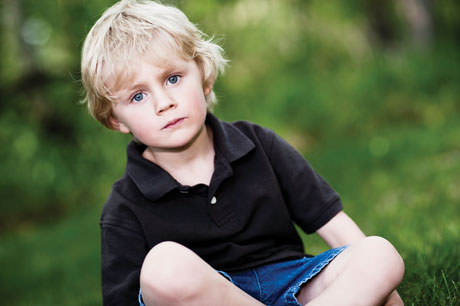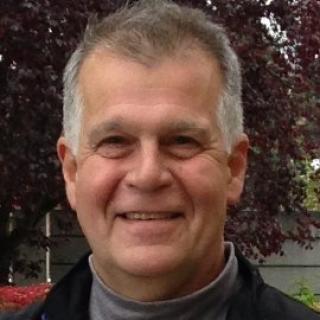 Allison Perea knew nothing about autism until she sent her son to preschool. Although she was aware that Tyler was quirky, Perea was blindsided when she was told he was autistic.
Allison Perea knew nothing about autism until she sent her son to preschool. Although she was aware that Tyler was quirky, Perea was blindsided when she was told he was autistic.
“When someone tells you your child isn’t right, you’re shocked and devastated and don’t know what to think,” says the Yelm resident.
Autism is a complex brain disorder caused by a combination of genetic and environmental factors that are not fully understood. It’s characterized by speech delays, social challenges and repetitive behaviors that vary from mild to severe.
Tyler was 4 when he was diagnosed. That’s about the average age — but not the ideal age — when children with autism are diagnosed and begin to receive the intense speech, behavior and other therapies needed to learn to communicate and interact appropriately with others. Now 9, Tyler has made “huge progress” in his ability to make friends and be around people, says Perea.
Autism rates increase for children
Tyler’s individual progress mirrors the overall progress made in diagnosing, treating and discovering the causes of autism — especially since 2009. That’s when the Centers for Disease Control and Prevention (CDC) announced that one in 110 children is living with some degree of the complex developmental disorder — a dramatic spike over previous estimates.
This spring, the CDC reported that the rate of children in the U.S. with autism has nearly doubled, to one in 88 — one in 54 among boys — which is sure to add an even greater sense of urgency to the search for answers.
“The rate at which knowledge is being gained is increasing exponentially,” says Geri Dawson, Ph.D., chief science officer for Autism Speaks, the nation’s largest autism advocacy organization. “As we continue to study it over the next five years, we’re going to gain much better insights into the causes of autism and learn much better ways to diagnose autism earlier in life.”
Dawson is the former director of the University of Washington Autism Center, which offers autism treatment, provides professional training and conducts research. Early detection and intervention are especially important areas of study as efforts to lower the average age of diagnosis — currently 4 and a half years — are beginning to show results.
“Autism can now be diagnosed by 24 months and in many children younger than that,” says Wendy Stone, Ph.D., current director of the UW Autism Center and a psychology professor. “There are also better interventions being developed for very young children.”
Early treatment for autism is crucial
All of that is critical because early treatment can lead to better outcomes. “A young child’s brain is a more rapid learning machine,” says Dr. Chuck Cowan, medical director at Seattle Children’s Hospital Autism Center. “The earlier that a diagnosis is made, the more efficiently therapy works.”
In 2007, the American Academy of Pediatricians recommended that children be screened for autism during their 18- and 24-month checkups. Last year, researchers tested a new screening tool that was able to diagnose autism at the age of 1.
Recent research involving the UW Autism Center and other similar centers around the country produced another important finding related to early detection. Younger siblings of children with autism have nearly a one in five chance of having autism.
“We didn’t know the risk is as high as one in five,” Stone says. “That has really important implications for families and community physicians to understand the need to monitor social and communication issues before they cascade into bigger issues.”
Perea and her husband, Javier, have a second son, Jace, who began showing signs of autism at 2 — something they were able to spot because of their experience with Tyler. Although he hasn’t been formally diagnosed, the 6-year-old has been working with the same therapist as his older brother for the last three years.
The therapist, Paul Johnson of Foundations for Learning in Redmond, uses applied behavior analysis (ABA) to teach autistic children the verbal and social skills they need to reach their full potential. The “treatment of choice” for autism, ABA identifies the specific social/behavior skills that children are lacking and uses a system of repeated rewards and consequences to instill them. “They have to learn behavior that doesn’t come naturally to them,” Johnson says.
The transition from home to school can be an especially difficult stage for autistic children. “Ages 4–8 is where they have a lot of behavior issues,” Johnson says. “They have trouble with the noise and chaotic classroom environment. They may throw things, push kids and take things the wrong way.”
Yet, it doesn’t have to be that way if therapy begins early enough. “We’ve become much more definitive about what kind of services make a difference for kids,” says Dan Stachelski, president of Lakeside Center for Autism in Issaquah.
As researchers identify the molecular differences in the brains of autistic children that lead to specific symptoms, therapists like Stachelski will be able to provide even more effective treatment.
“Every child’s profile is different,” he says. “The more focused we can be on what their needs are, the better outcomes will be.”
Brad Broberg is a freelance writer and former newspaper editor and reporter. He lives in Browns Point with his wife, Julee, and daughter, Rachel, who is graduating from Todd Beamer High School this year.
Autism symptoms in kids: what to look for
Autism symptoms appear sometime between birth and the age of 3 years. Here are 7 signs that a child may be autistic:
1. Not responding to their name by 12 months
2. Avoiding eye contact and wanting to be alone
3. Delayed speech and language skills
4. Getting upset by minor changes
5. Repeating words or phrases over and over
6. Having obsessive interests
7. Flapping their hands, rocking their body or spinning in circles
Source: Centers for Disease Control & Prevention
5 great websites with autism information
Autism research
Infant Brain Imaging Study
University of Washington Autism Center
CDC’s Autism Spectrum Disorders information
Autism Speaks











